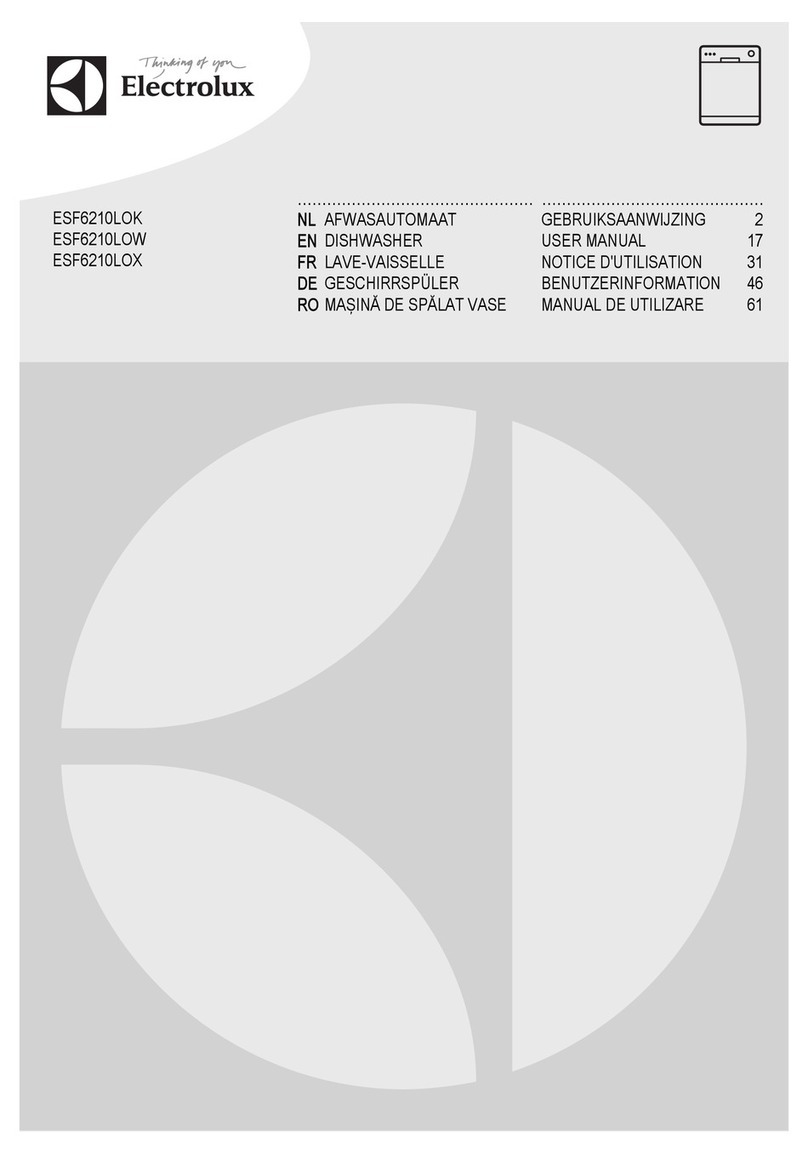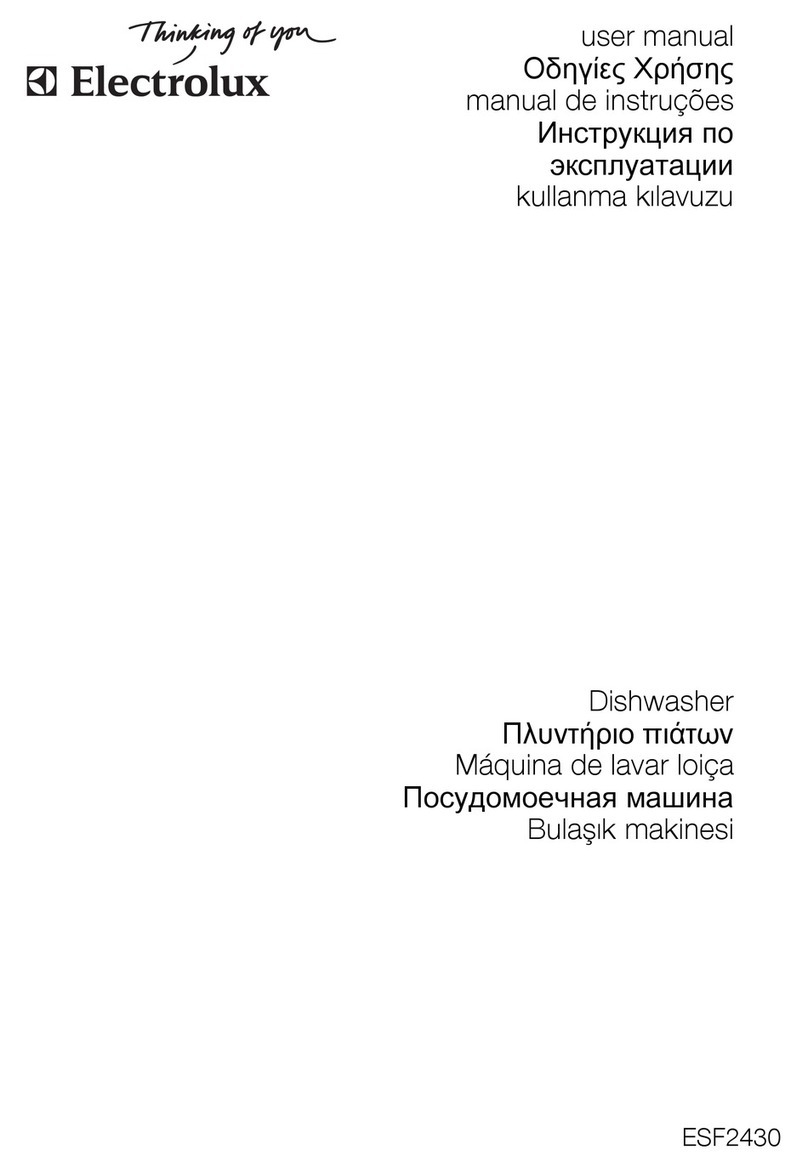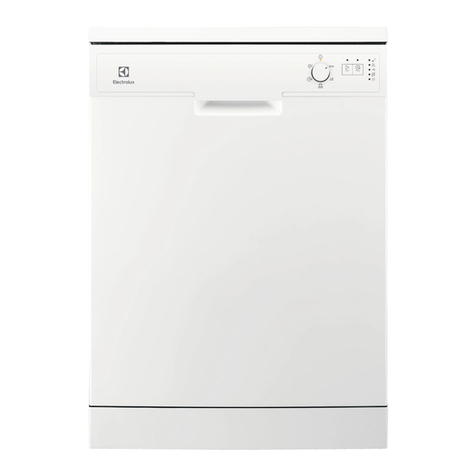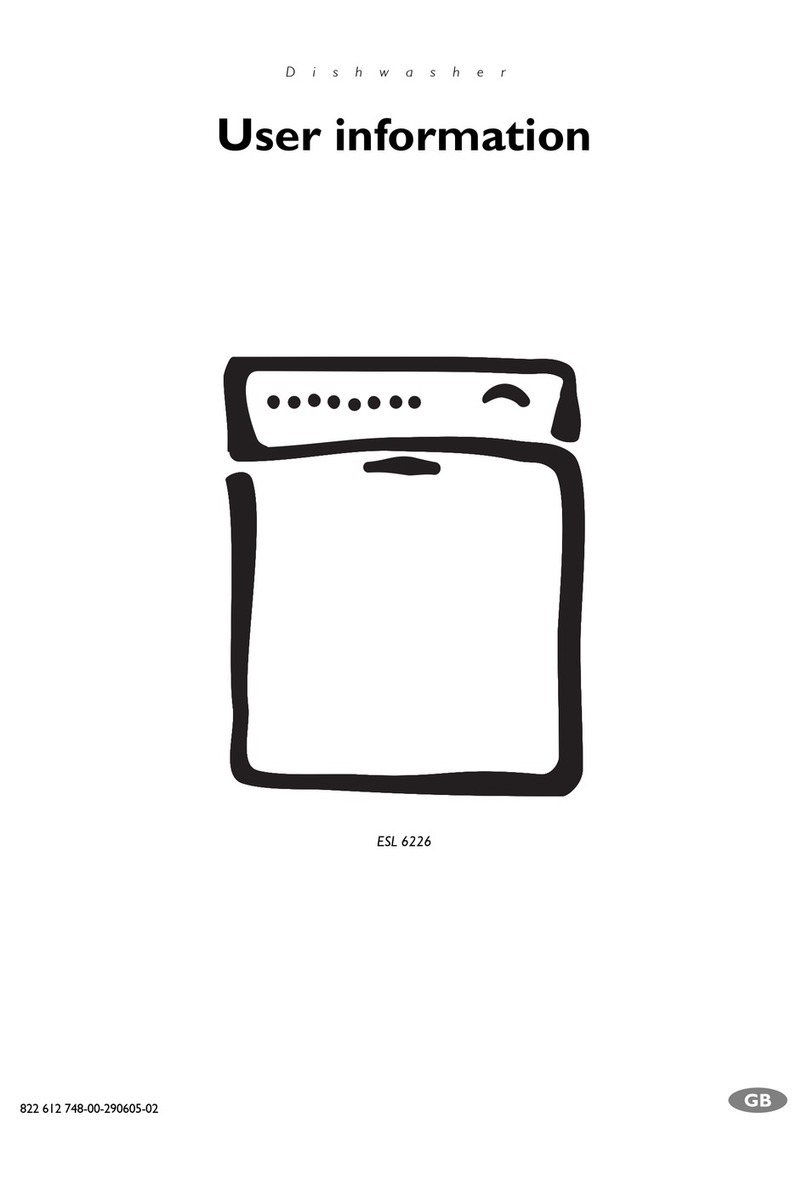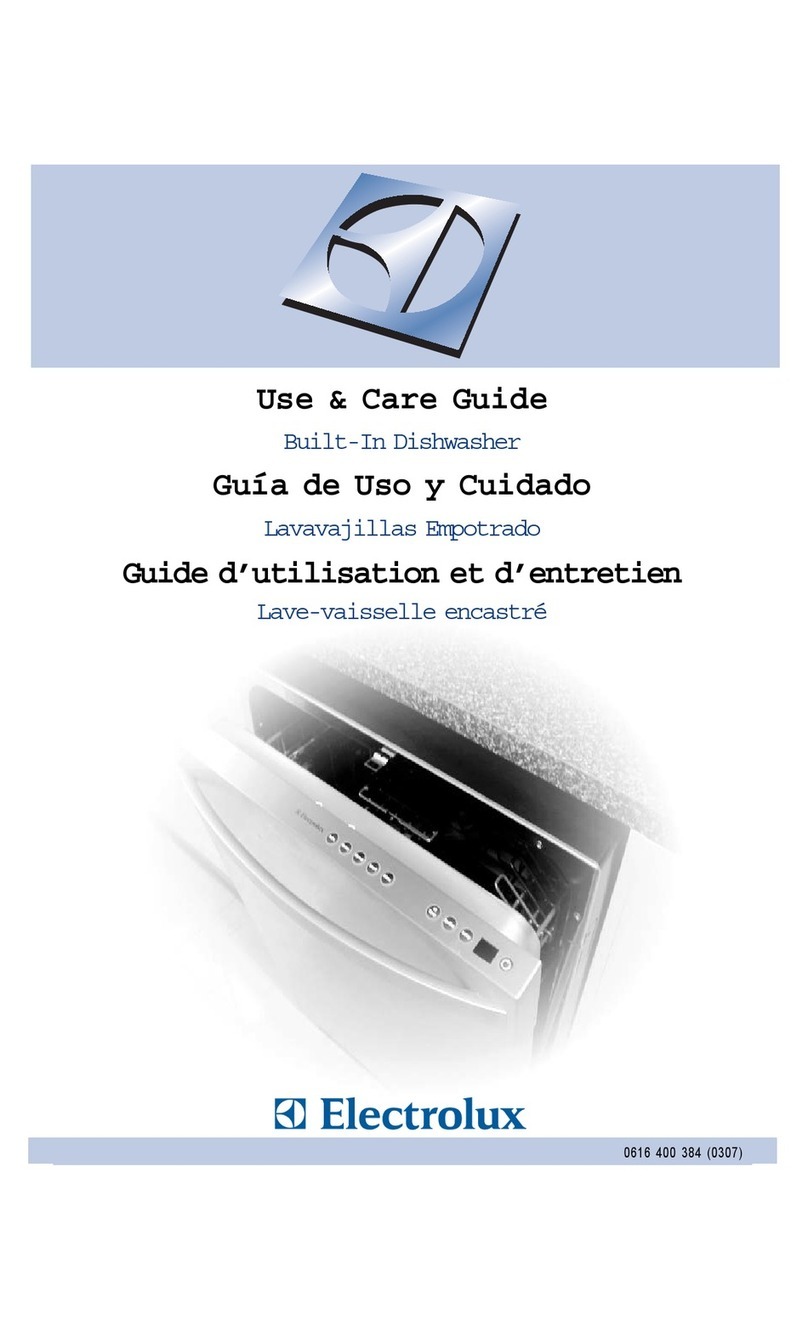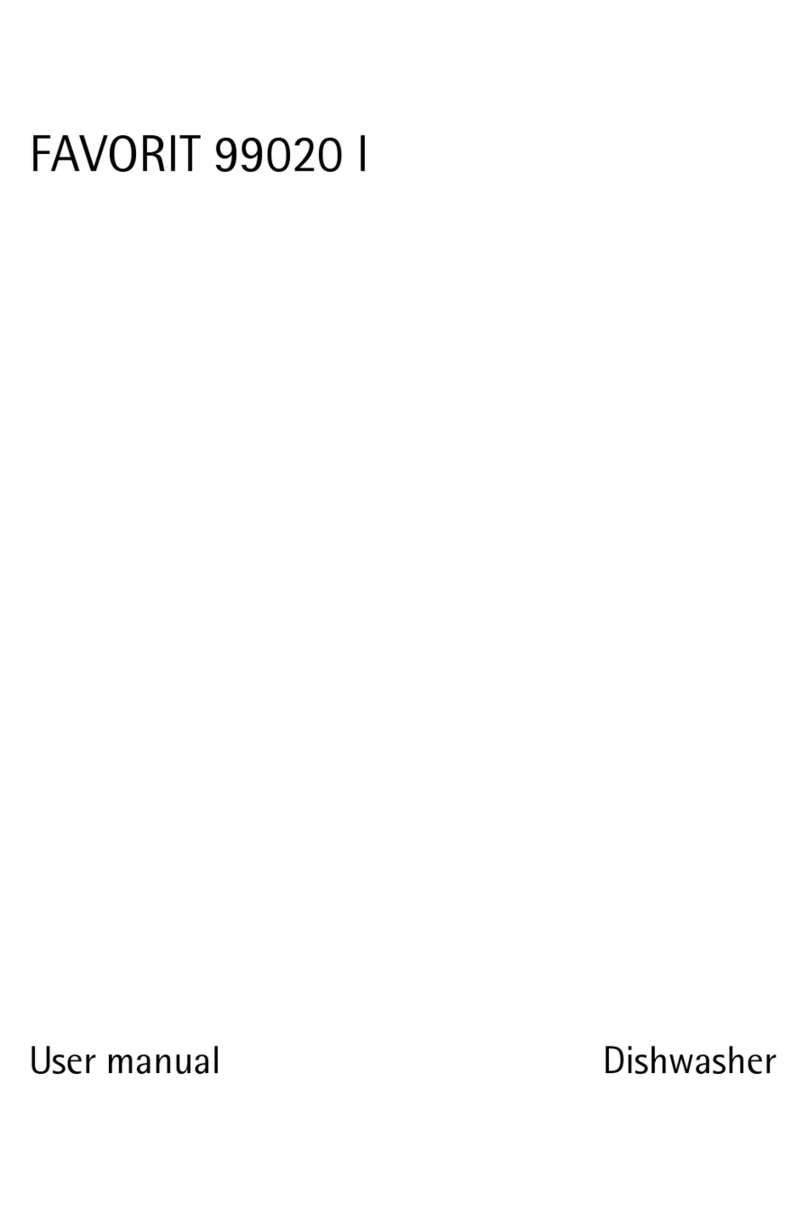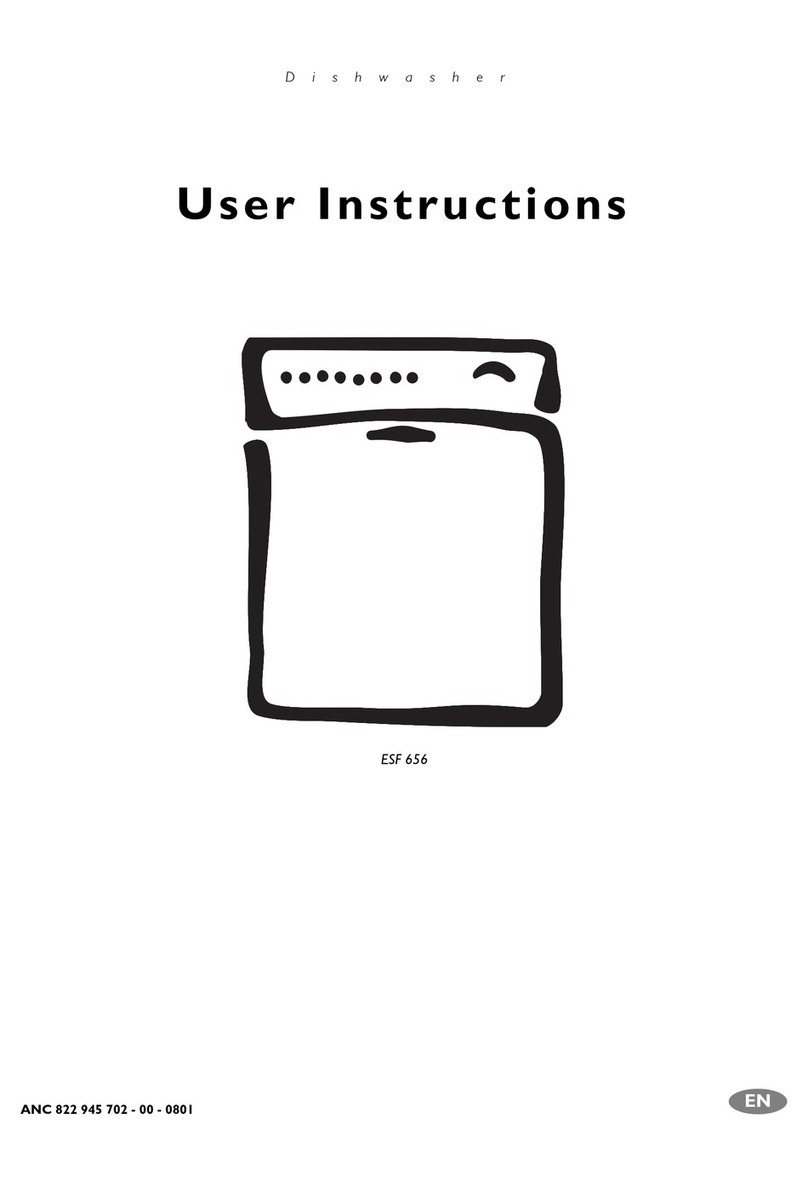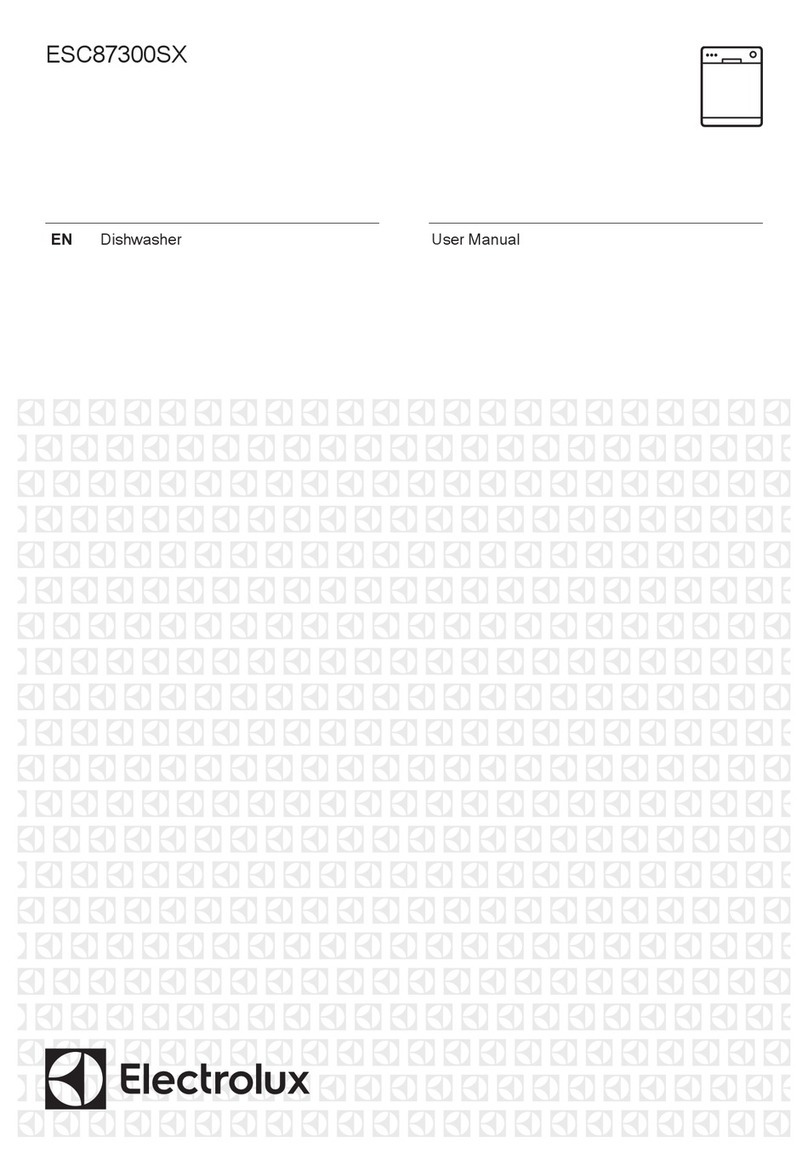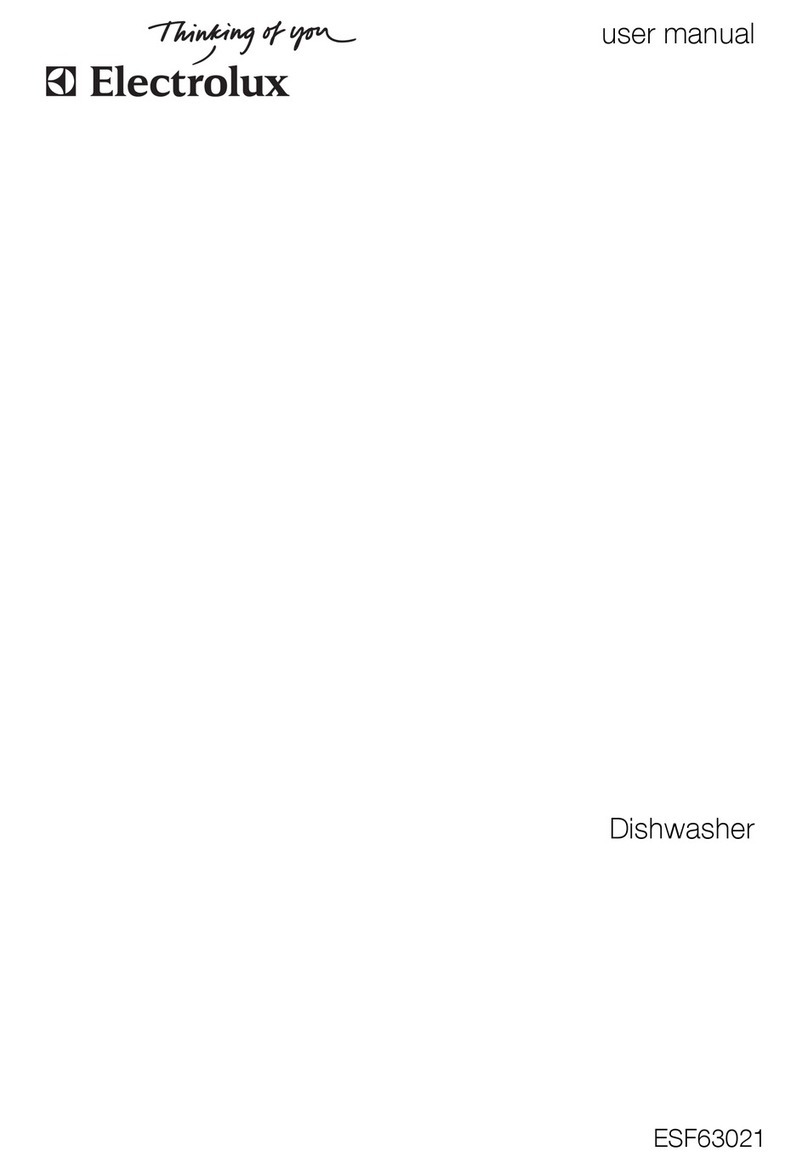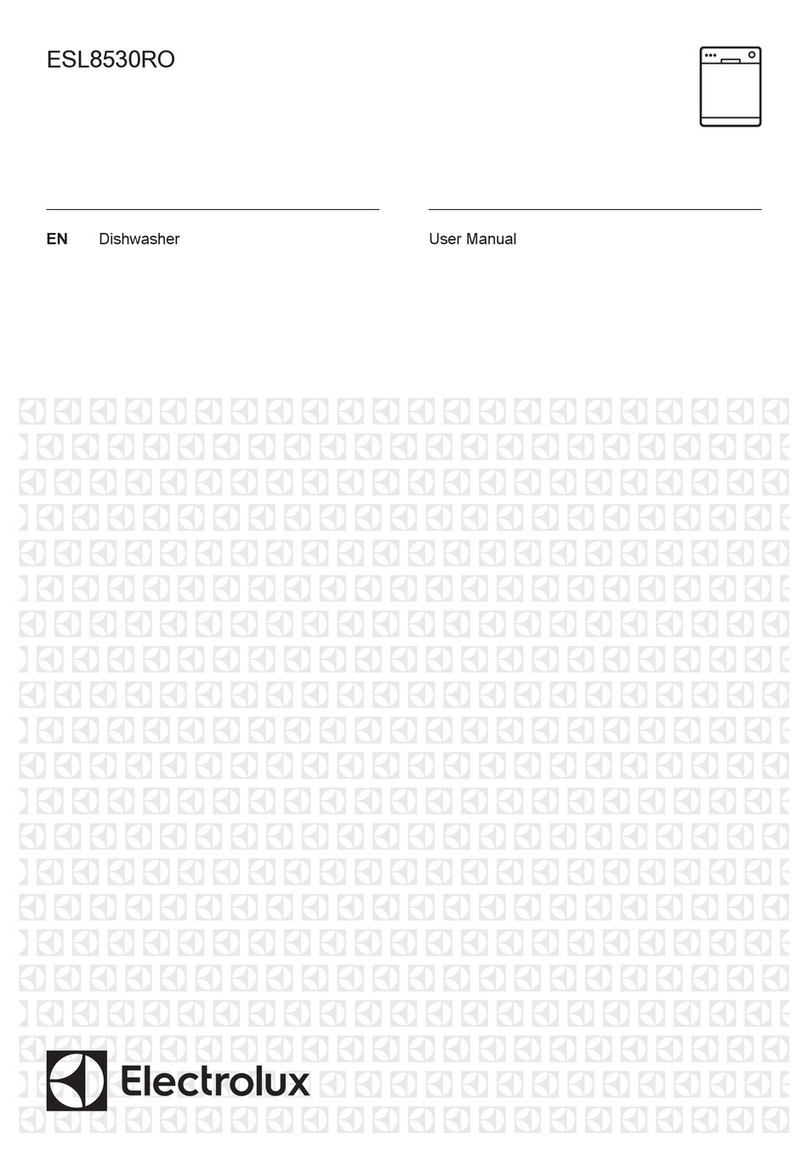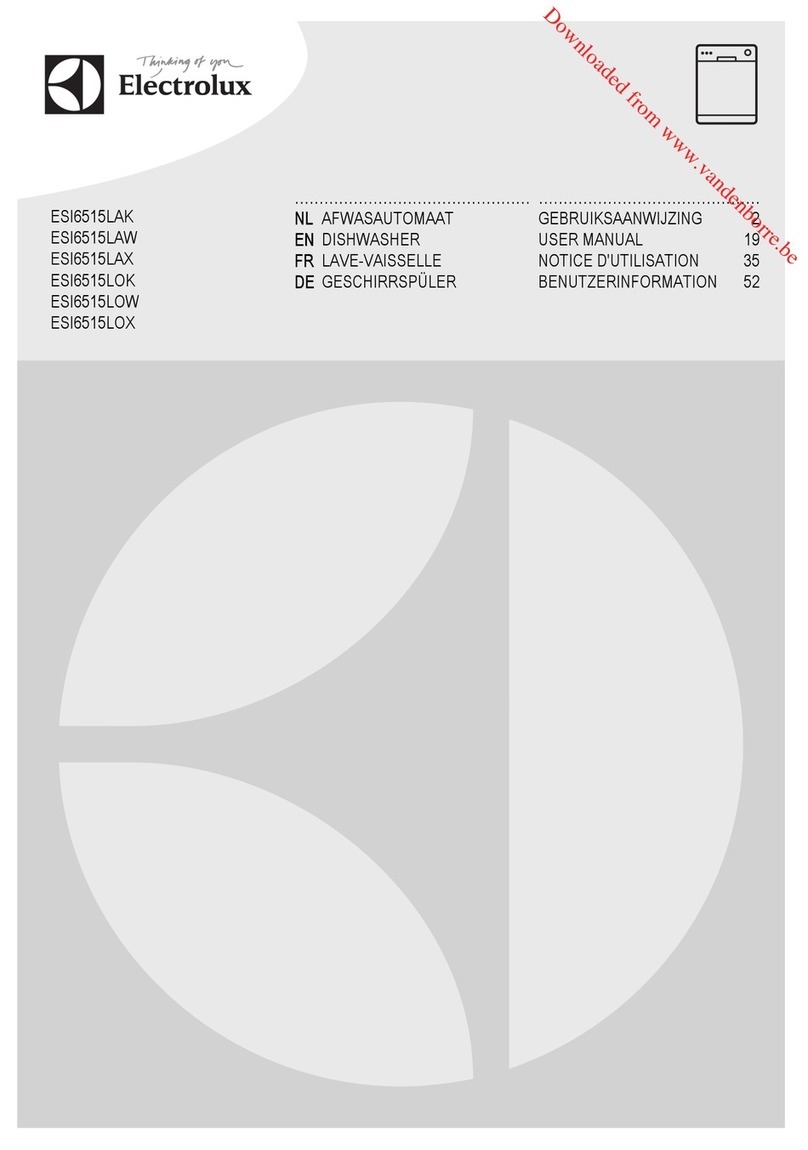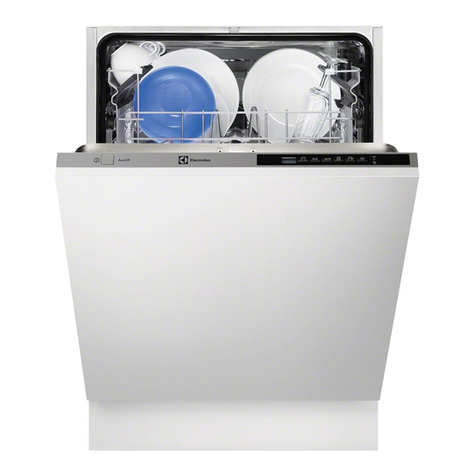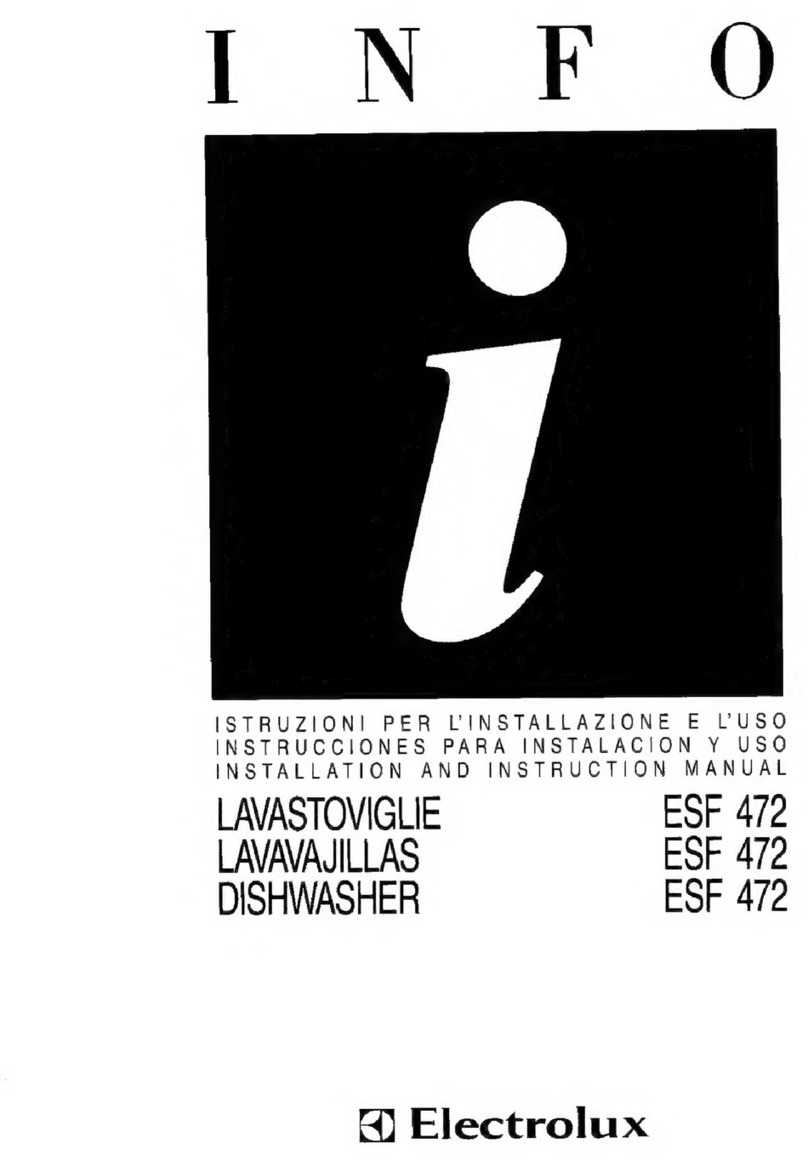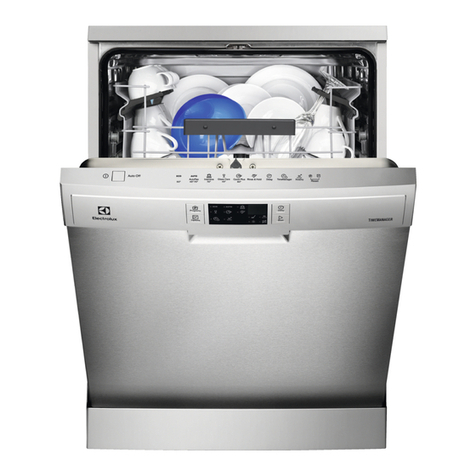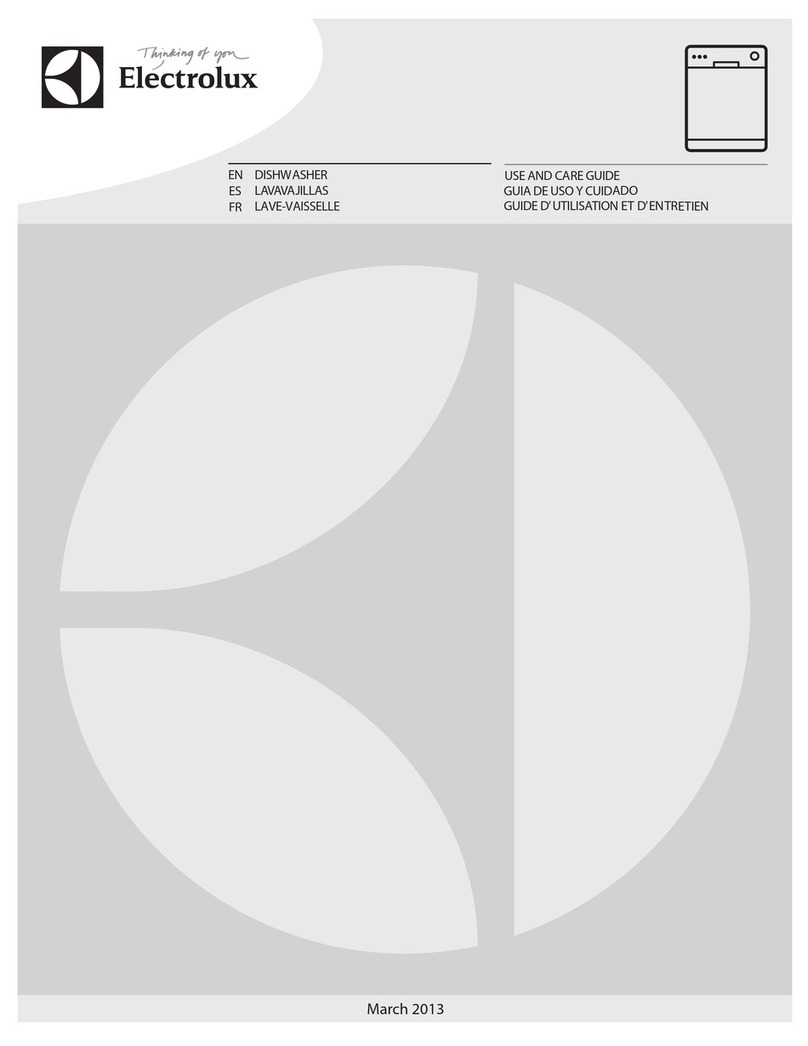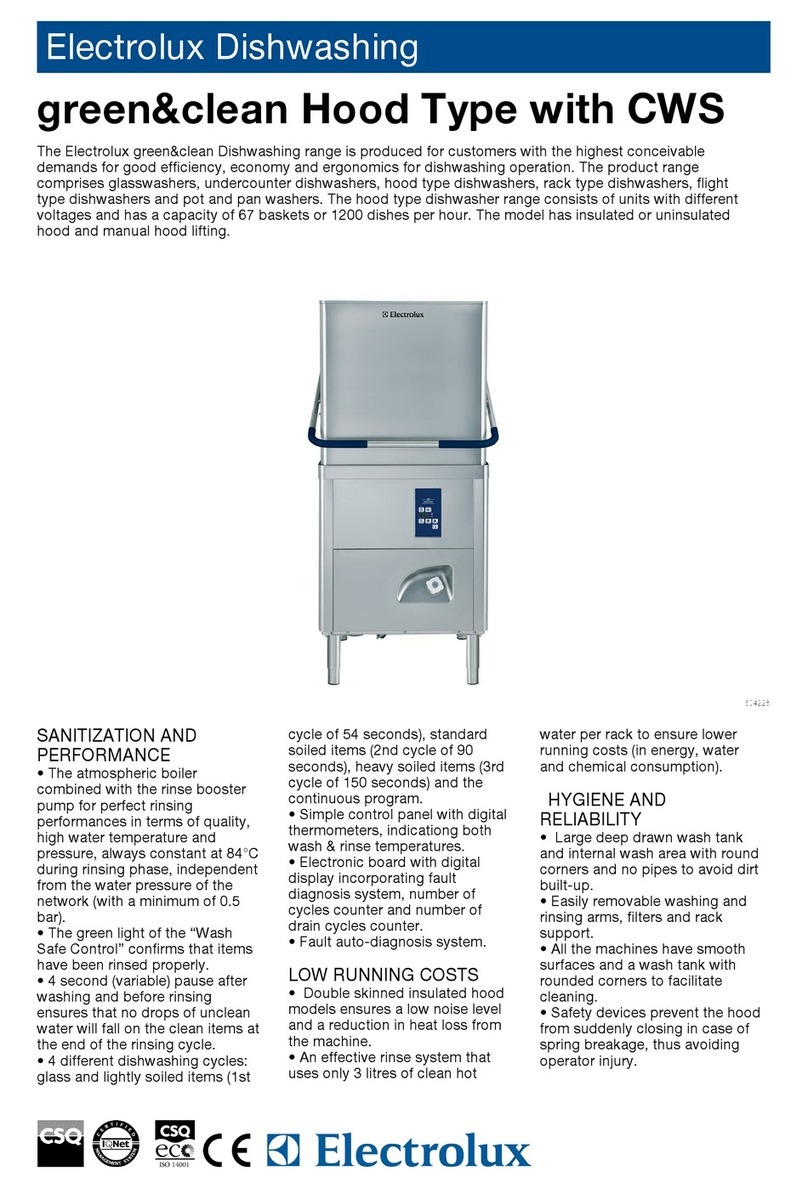If this level is not suita le for your area the softener should e
adjusted.
Each push utton corresponds to a different level (see chart).
The adjustment of the water softener is possible only with
the machine in setting mode.
To select a different level proceed as follows:
1. Press "Normal 65°" and "Quic 50°" programme push
uttons simultaneously for a out 5 seconds. The indicator
light corresponding to the current level flashes.
2. Press the programme push utton corrrsponding to the
required level.
3. 5 seconds after having pressed any of the programme push
uttons, the dishwasher memorises the level selected and
returns to the programme setting mode.
Filling with salt
Only use salt specifically designed for use in
dishwashers.
All other types of salt not specifically designed for use in
a dishwasher, especially table salt, will damage the water
softener.
Only fill with salt just before starting one of the complete
washing programmes. This will prevent any grains of salt
or salty water, which may have been spilled, remaining on
the bottom of the machine for any period of time, which
may cause corrosion.
To fill:
1. To fill with salt, unscrew the cap of the salt container.
2. Pour 1 litre of water inside the container (this is necessary
only before filling with salt for the first time).
3. Using the funnel provided,
pour in the salt until the
container is full.
Do not worry if water over
flows from the unit when
filling with salt, this is quite
normal.
4. Replace the cap making
sure that there is no trace
of salt on the screw thread
or on the gasket.
5. Screw on the cap tightly.
The salt container will require topping up periodically.
You are reminded of this y the salt indicator light on the
control panel which comes on when the salt has finished.
The salt indicator light on the control panel can remain
illuminated for 2-6 hours after the salt has been
replenished, assuming the dishwasher remains switched
on. If you are using salts that ta e longer to dissolve then
this can ta e longer.
The operation of the machine is not affected.
Rinse aid
Rinse aid is automatically added during the last rinse, ensuring
thorough rinsing, and spot and streak free drying. The
dispenser, which is positioned inside the door, holds a out 110
ml of rinse aid, which is sufficient for 16 - 40 dishwashing
programmes, depending upon the dosage setting.
Filling with rinse aid
1. Open the container y turning the lid (A) anticlockwise.
2. Add the rinse aid until the container is completely full.
The indicator (B) will e completely dark.
3. Top up the rinse aid when indicator (B) ecomes clear.
Ensure that the lid is closed after every refill.
Do not put liquid detergent in the rinse aid compartment. Clean
up any rinse aid spilt during filling with an a sor ent cloth to
avoid excess foaming during the next wash.
Adjusting the dose
According to the finish and drying results o tained, adjust the
dose of rinse aid y means of the 6 position selector (C)
(position 1 minimum dosage, position 6 maximum dosage).
Increase the dose if there are drops of water or lime spots on
the dishes after washing.
Reduce it if there are sticky whitish streaks on the dishes.
5

